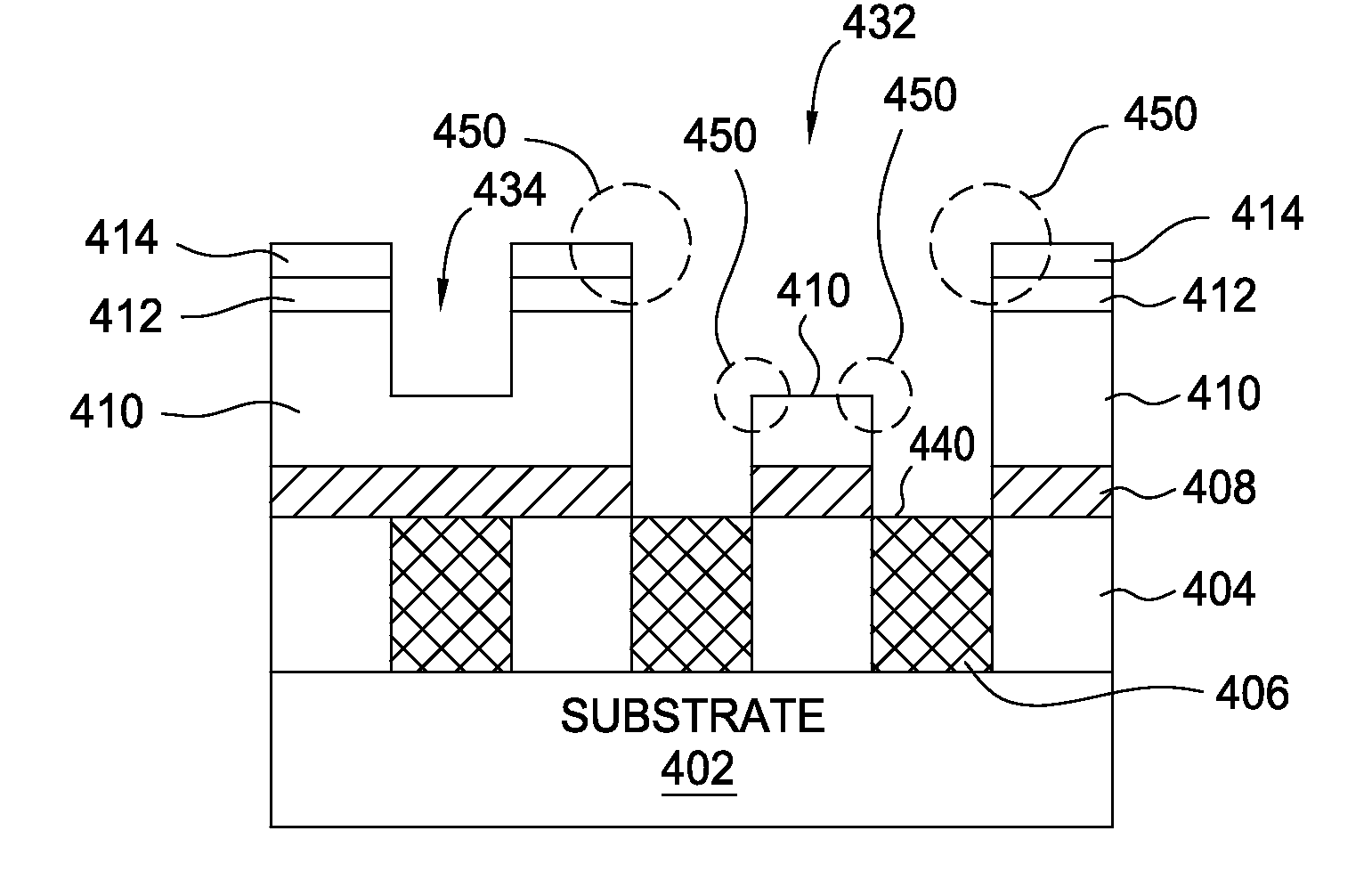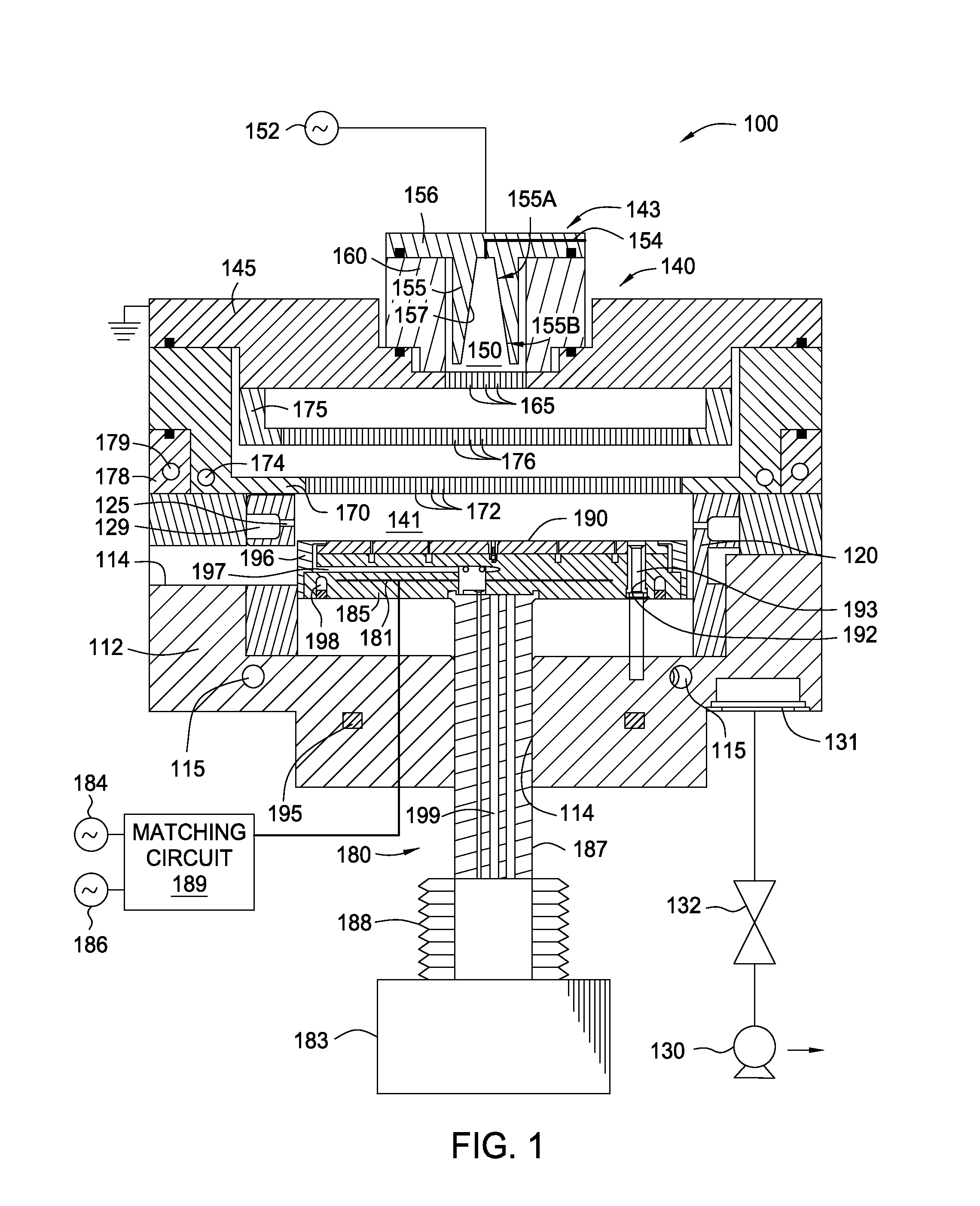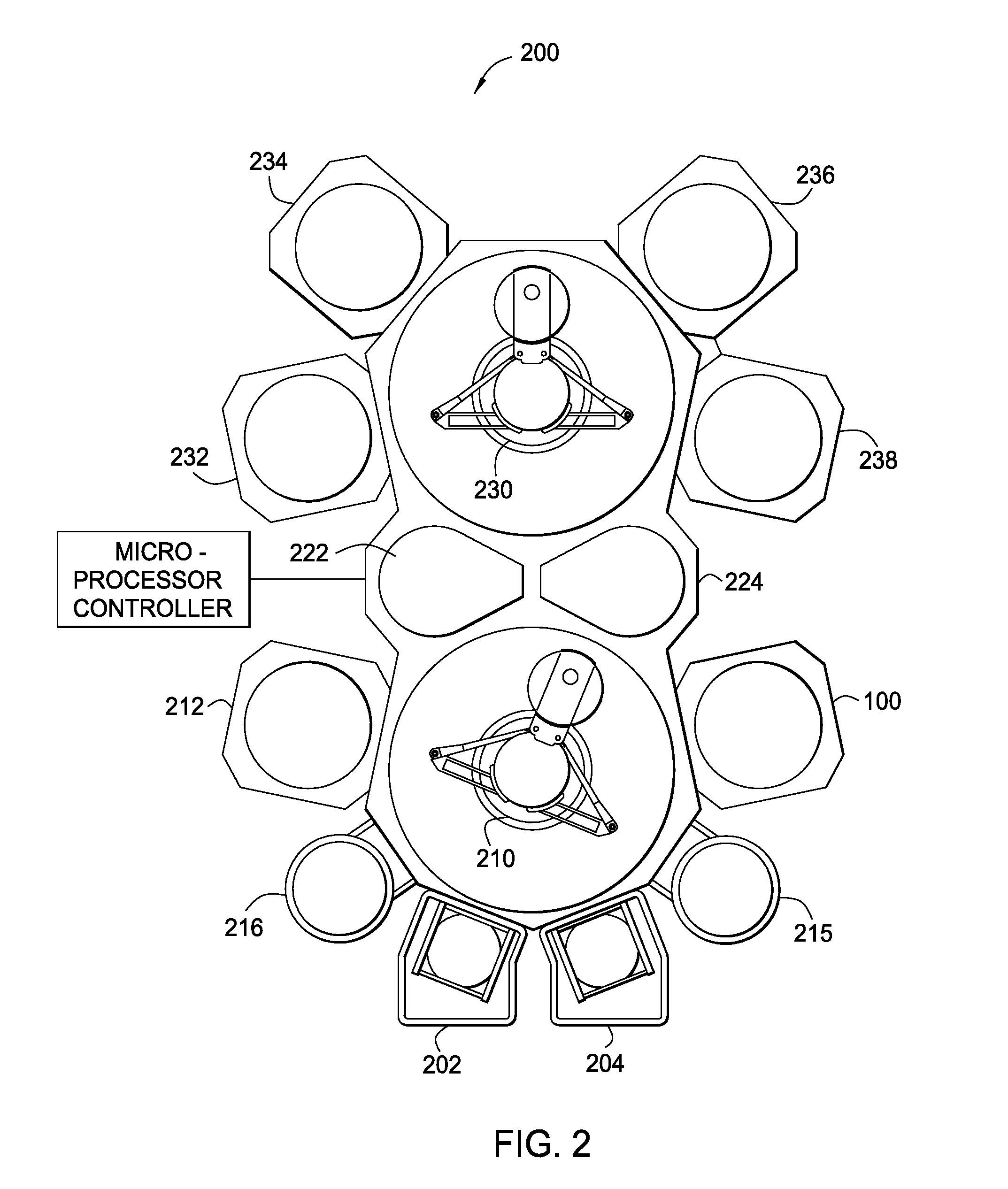Methods for etching a dielectric barrier layer in a dual damascene structure
a dielectric barrier layer and damascene technology, applied in the direction of electrical equipment, basic electric elements, electric discharge tubes, etc., can solve the problems of inoperable circuit, undesirable metal diffusion into the dielectric bulk insulating material, and degrade the overall performance of the integrated circui
- Summary
- Abstract
- Description
- Claims
- Application Information
AI Technical Summary
Benefits of technology
Problems solved by technology
Method used
Image
Examples
Embodiment Construction
[0021]Methods for forming a dual damascene structure without early exposure to an underlying conductive layer formed in the dual damascene structure and for etching a dielectric barrier layer in the dual damascene structure are disclosed herein which provide an etching process with high etching selectivity and interface high quality after the dual damascene manufacturing process. In one embodiment, the dielectric barrier layer etching process includes a cyclic etching process to repetitively and incrementally etch the dielectric barrier layer until an underlying conductive layer is exposed. Furthermore, the sequence for etching film materials formed in the dual damascene structure is also arranged in a manner (known as “Barrier Open Last” process) to eliminate exposure time of the conductive layers after the dielectric barrier layer etching process. By utilizing an etching process with high etching selectivity along with the “Barrier Open Last” process sequence, a good interface con...
PUM
 Login to View More
Login to View More Abstract
Description
Claims
Application Information
 Login to View More
Login to View More - R&D
- Intellectual Property
- Life Sciences
- Materials
- Tech Scout
- Unparalleled Data Quality
- Higher Quality Content
- 60% Fewer Hallucinations
Browse by: Latest US Patents, China's latest patents, Technical Efficacy Thesaurus, Application Domain, Technology Topic, Popular Technical Reports.
© 2025 PatSnap. All rights reserved.Legal|Privacy policy|Modern Slavery Act Transparency Statement|Sitemap|About US| Contact US: help@patsnap.com



